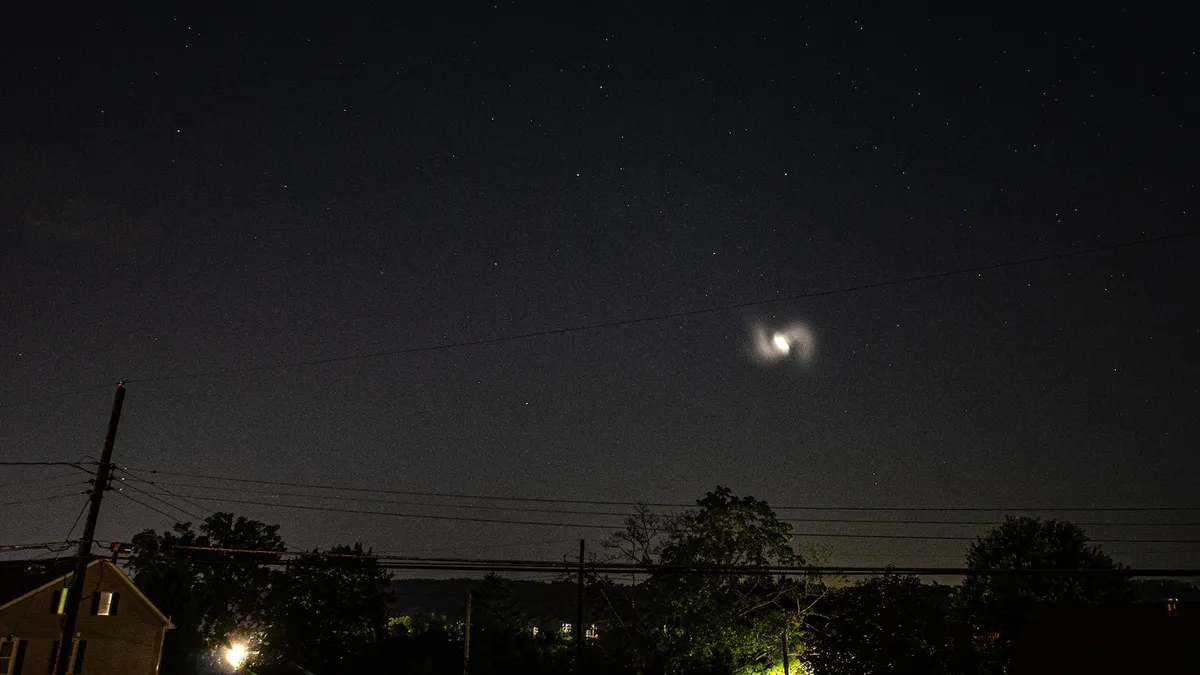
On Tuesday night, stargazers along the East Coast were treated to a breathtaking spectacle as they awaited the annual Perseid meteor shower. In addition to the anticipated meteor shower, observers witnessed a series of mesmerizing spirals lighting up the night sky. These unusual formations, which resembled swirling lights, were attributed to multiple recent rocket launches.
Videos capturing this extraordinary light display quickly spread across social media platforms, with reports coming in from states such as Maryland, New York, New Jersey, Tennessee, Illinois, Ohio, and Nebraska. Many viewers began sharing their experiences after 9 p.m. ET on Tuesday, with ABC Philadelphia station WPVI receiving numerous calls and messages around 10:30 p.m. from excited witnesses eager to discuss the phenomenon.
One observer, Blake Brown, who was in Algonquin, Illinois, described the spiraling lights as an unexpected addition to his stargazing experience. He was watching for the meteor shower when the spirals appeared, leading him to share his awe with ABC News. The unexpected light show added an extra layer of excitement to the already thrilling night for astronomy enthusiasts.
According to Jonathan C. McDowell, an astrophysicist at the Harvard-Smithsonian Center for Astrophysics, the majority of the spiral light sightings can be traced back to the launch of the Ariane 6 rocket. This powerful rocket lifted off from the Guiana Space Centre in Kourou, French Guiana, at approximately 8:37 p.m. ET. The rocket stands at an impressive 196 feet tall and is designed to launch both heavy and light payloads, supporting various applications, including Earth observation, telecommunication, meteorology, science, and navigation.
The spirals seen in the night sky were likely a result of the upper stage of the rocket tumbling during its disposal rocket firing at the end of the launch. McDowell explained that the spiral light occurs when sunlight reflects off the frozen plume of fuel expelled by the rocket's exhaust. "It's a nice, perfect spiral because it's way out in space with no air to distort the shape," he noted, emphasizing the unique conditions that led to this stunning visual.
In addition to the Ariane 6 launch, another significant event occurred when the Vulcan Centaur Rocket successfully lifted off from Cape Canaveral Space Force Station in Florida at 8:56 p.m. ET. This 202-foot rocket was tasked with carrying a pair of experimental navigation satellites for the United States Space Force's inaugural mission. As the Vulcan ascended into a high orbit, it continued to coast upward without firing when some observers reported seeing the spiral lights.
McDowell suggested that if individuals in Florida noticed unusual lights at around 9:37 or 9:45 p.m. ET, those could have been related to the Vulcan launch. The convergence of these rocket launches and the Perseid meteor shower created a memorable night for stargazers, combining natural beauty with human ingenuity in space exploration.